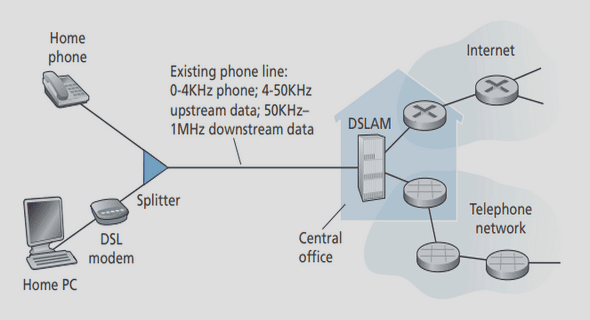(Downloads - 0)
For more info about our services contact : help@bestpfe.com
Table of contents
Chapter 1 Introduction
1.1. The calcium carbonate system
1.2. Calcium carbonate mineral nucleation pathways
1.3. Classical Nucleation Theory
1.4. Heterogeneous nucleation
1.5. Multistep nucleation pathways
1.6. The amorphous precursor strategy
References
Chapter 2 State of the art and research questions
2.1. Heterogeneous nucleation of CaCO3
2.1.1. Thermodynamics of heterogeneous nucleation
2.1.2. Heterogeneous nucleation: A molecular view of the electrolyte-substrate interface
2.2. Surface hydrophobicity and properties of interfacial water
2.3. Amorphous calcium carbonate: an intermediate in the CaCO3 crystallization processes
2.3.1. Structure of amorphous calcium carbonate and polyamorphism
2.3.2. Water as structural component
2.3.3. Dynamics of structural water and kinetic control of additives
2.4. Summary of research questions and hypotheses
2.5. Dissertation organization
References
Chapter 3 Fundamentals: experimental and theoretical methods
3.1. X-ray Photon Correlation Spectroscopy (XPCS)
3.2. Near-Ambient Pressure X-ray Photoelectron Spectroscopy (NAP-XPS)
3.2.1. Electronic structure of atoms
3.2.2. General principles
3.2.3. Near-Ambient Pressure X-ray Photoelectron Spectroscopy and its application
3.3. Grazing-incidence Small Angle X-ray Scattering
3.3.1. General principles
3.3.2. Data analysis
3.4. Inelastic Incoherent Neutron Scattering (IINS)
3.4.1. Inelastic neutron scattering (INS)
3.4.2. Inelastic Incoherent Neutron Scattering (IINS) as a probe of hydrogen dynamics
3.5. Molecular Dynamics simulations
3.6. Bond-valence model
References
Chapter 4 Heterogeneous nucleation of calcium carbonate: effect of surface hydrophobicity
4.1. Introduction
4.2. Materials and Methods
4.2.1. Sample preparation
4.2.2. In situ time-resolved Grazing-Incidence Small Angle X-ray Scattering (GISAXS)
4.2.3. Ex situ heterogeneous nucleation experiments
4.3. Results
4.3.1. In situ time-resolved GISAXS
4.3.2. Ex situ observation by Atomic Force Microscopy
4.3.3. Ex situ observation by ATR-FTIR
4.4. Discussion
4.4.1. Effect of surface hydrophobicity on ’ values
4.4.2. Surface hydrophobicity controls the kinetic persistence of ACC
4.4.3. Can there be thermodynamic contributions to the stability of ACC controlled by surface hydrophobicity?
4.4.4. Limitation in the application of CNT
4.5. Conclusion
Supporting information
References
Chapter 5 Surface hydrophobicity and properties of interfacial water
5.1. Introduction
5.2. Materials and Methods
5.2.1. Phlogopite mica
5.2.2. Near-ambient pressure X-ray Photoelectron Spectroscopy (NAP-XPS)
5.2.3. Molecular dynamics simulations
5.3. Results
5.3.1. NAP-XPS
5.3.2. Molecular dynamics simulations
5.4. Discussion
5.4.1. Oxygen species of phlogopite mica
5.4.2. Effects of surface hydration on bonding environments
5.4.3. Detailed picture of surface hydration: what makes surface hydrophobic and what initiates water adsorption?
5.4.4. Sensitivity of classical MD simulation on predicting the shifts in binding energies
5.5. Conclusion
Supporting Information
References
Chapter 6 Nanoscopic dynamics of amorphous calcium carbonate: understanding the mechanisms controlling the crystallization kinetics
6.1. Introduction
6.2. Materials and Methods
6.2.1 Sample preparation
6.2.2. Inelastic incoherent neutron scattering (IINS)
6.2.3. X-ray photon correlation spectroscopy (XPCS)
6.2.4. Thermogravimetric and calorimetric analyses
6.3. Results
6.3.1. High-energy water dynamics probed by IINS
6.3.2. Ionic dynamics probed by XPCS
6.4. Discussion
6.4.1. The effects of Mg2+ on the water dynamics
6.4.2. Amorphous carbonates as highly dynamics soft matter systems
6.4.3. Linking solid state dynamics and crystallization kinetics
6.4.4. Aging dynamics
6.5. Conclusions
Chapter 7 Conclusions
7.1. Heterogeneous nucleation of calcium carbonate: effect of surface hydrophobicity
7.2. Surface hydrophobicity and properties of interfacial water
7.3. Nanoscopic dynamics of amorphous calcium carbonate: understanding the mechanisms controlling the crystallization kinetics
7.4. New hypotheses
7.4.1. Multistep heterogeneous nucleation pathway
7.4.2. Coexistence of accelerated dynamics and stiff hydrogen bond networks


